The Bond franchise has always been a mecca for automotive action. Whether it’s the DB5’s famous ejector seat scene (Goldfinger), a Jag XKR hunting down an AM Vanquish on ice (Die Another Day) or the amphibious Lotus Esprit (The Spy Who Loved Me), Mr. Bond’s prowess at the wheel has never ceased to wow cinema audiences.
But in 1974, he – or rather, a brave and talented driver by the name of Loren ‘Bumps’ Willert – carried out what is still regarded as one of the all-time great car stunts ever committed to celluloid. Given that we’re talking about a film made nearly 50 years ago, it may also come as a surprise that the success of the ‘gag’ depended on computer modelling by the US’s National Highway Safety Bureau.
But first, some background. The Man With the Golden Gun was Roger Moore’s second outing as Bond, and the ninth film in the series. On the lead up to the stunt, Bond is pursuing archnemesis Francisco Scaramanga (Christopher Lee) and his diminutive henchman, Nick Nack (Hervé Villechaize), through the streets of Bangkok. Bond’s love interest, Mary Goodnight (Britt Ekland) is cooped in the boot of the villainous pair’s AMC Matador Coupe, so the stakes are high.
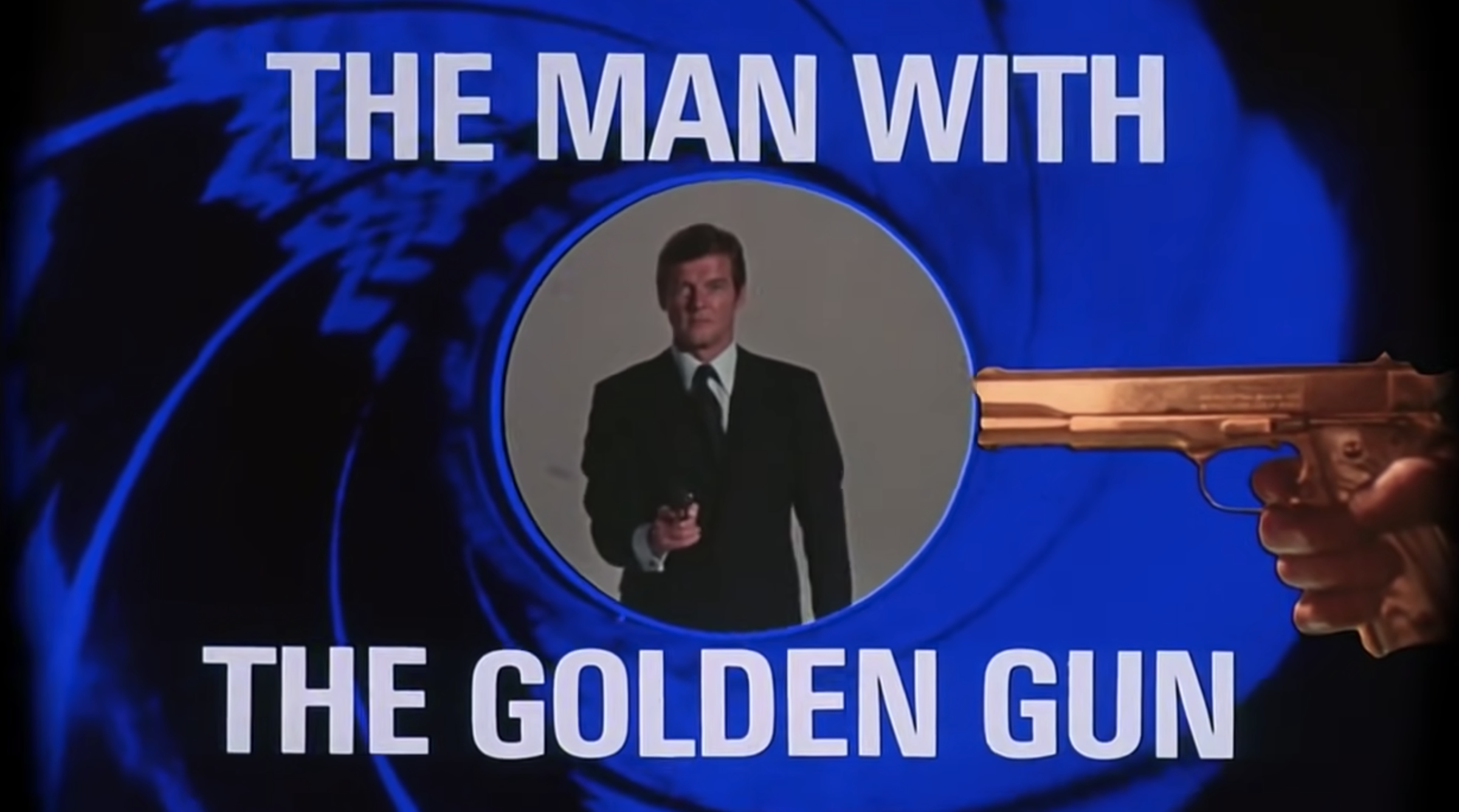
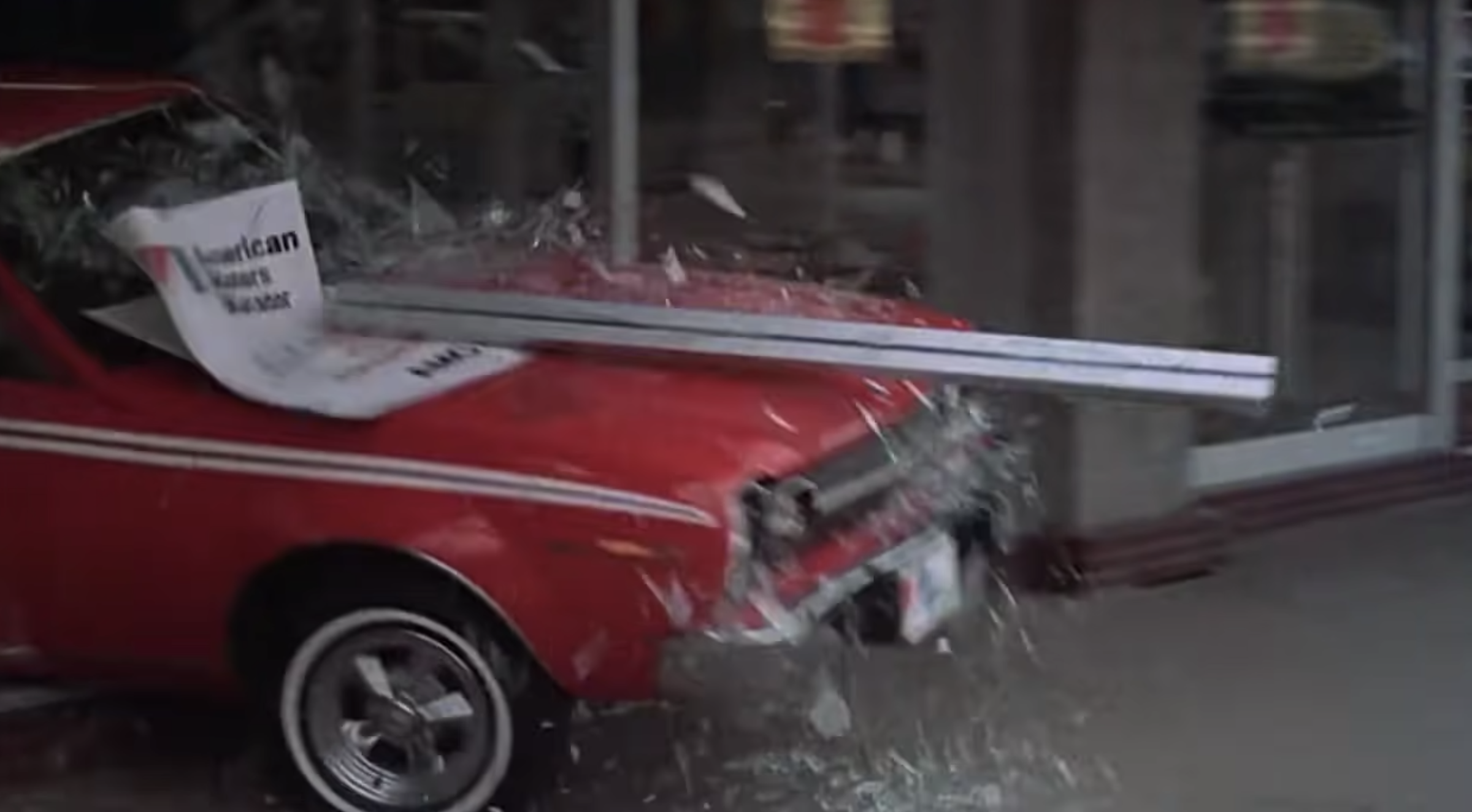
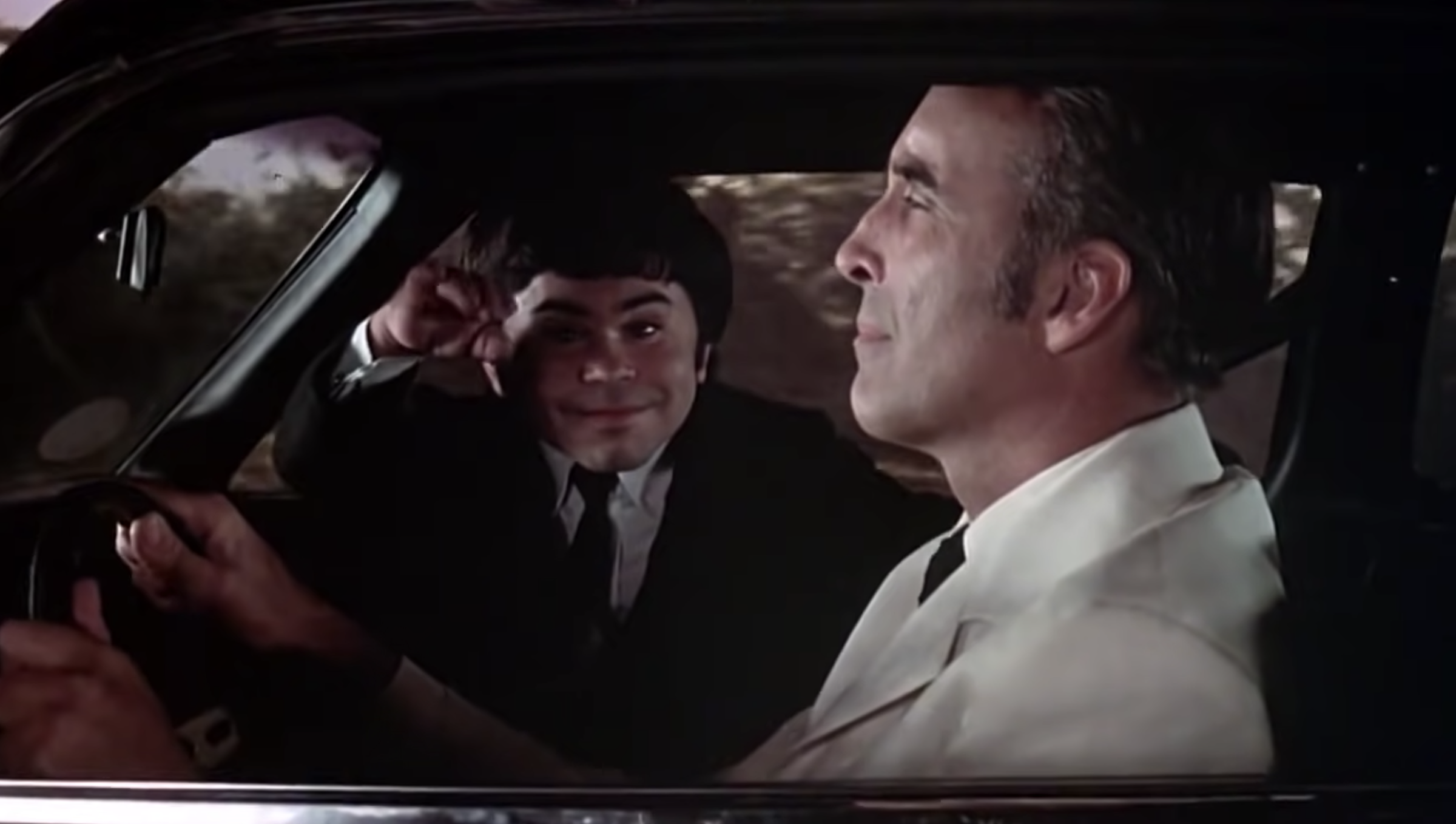
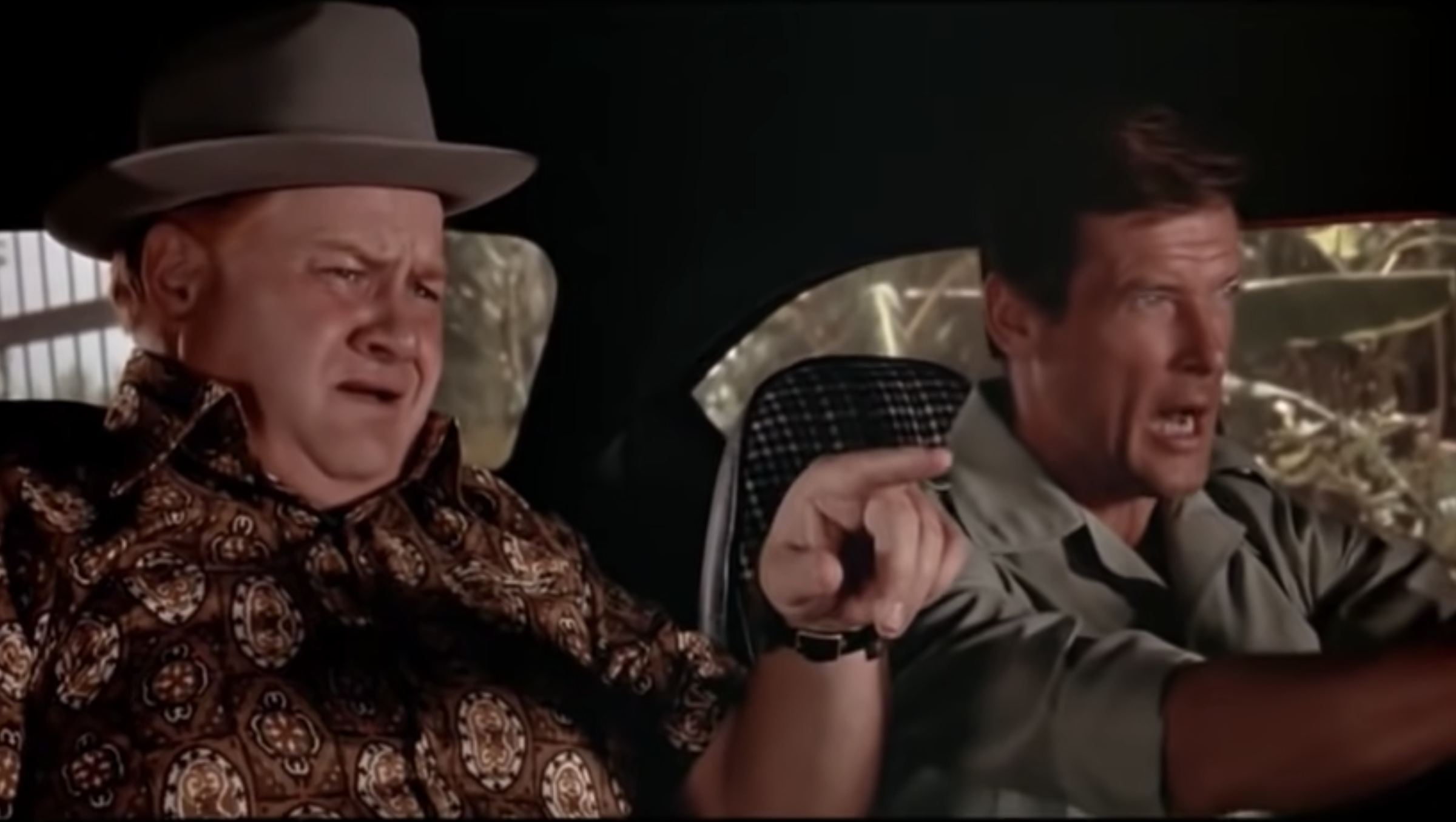
And AMC, which provided 15 cars for the film, definitely hit the product-placement jackpot in TMWTGG. Needing wheels, Bond purloins an AMC Hornet direct from a showroom – and drives straight through its plate-glass frontage – with, bizarrely, a vacationing Sheriff J.W Pepper (Clifton James) riding shotgun. (Pepper had appeared in Live and Let Die’s boat chase the year before.) You have to suspend disbelief slightly as Bond and Scaramanga careen through the right-hand-drive local traffic in LHD AMCs, especially when the local law also join the action in LHD Matador saloons.
That aside, stunt coordinator W.J Milligan at the wheel of the Hornet makes the street-chase look almost balletic, especially when only some of the drivers were pros, and many of the others regular drivers completely unaware that they were part of a fast-moving film set. Watch out for Milligan’s perfectly executed reverse J-turn, and a great mix of automotive street scenery: Fiat 125, Cortina GXL, Alfa Giulia saloon, Fiat 850 Coupé, Simca 1505, Triumph Toledo, and lots more.
The Hornet and Matador end up on opposite sides of a river, with Scaramanga smug in the belief that Bond can’t reach him. That is, until Bond passes the remains of a rickety, warped bridge, its centre section completely missing, and handbrakes the Hornet around to face it. “You’re not thinking that…”, whines Pepper, pointing incredulously at the bridge. “I sure am, boy!” replies Bond in a cod Southern drawl. And then, as he accelerates: “Ever heard of Evel Knievel?”
What you see as the camera cuts to an exterior down-river from the jump looks fake, but only because the Hornet’s spiral jump – the sharp warp of the take-off section twists the car through 270 degrees in the air to align with the section on the other side of the river – is so perfectly executed. There’s barely a wobble from the Hornet’s rear end as it seamlessly reaches the other side. The only spoiler in the slice of cinematographic genius is producer Cubby Broccoli’s inclusion of a childish slide-whistle sound effect, which composer John Barry later regretted.
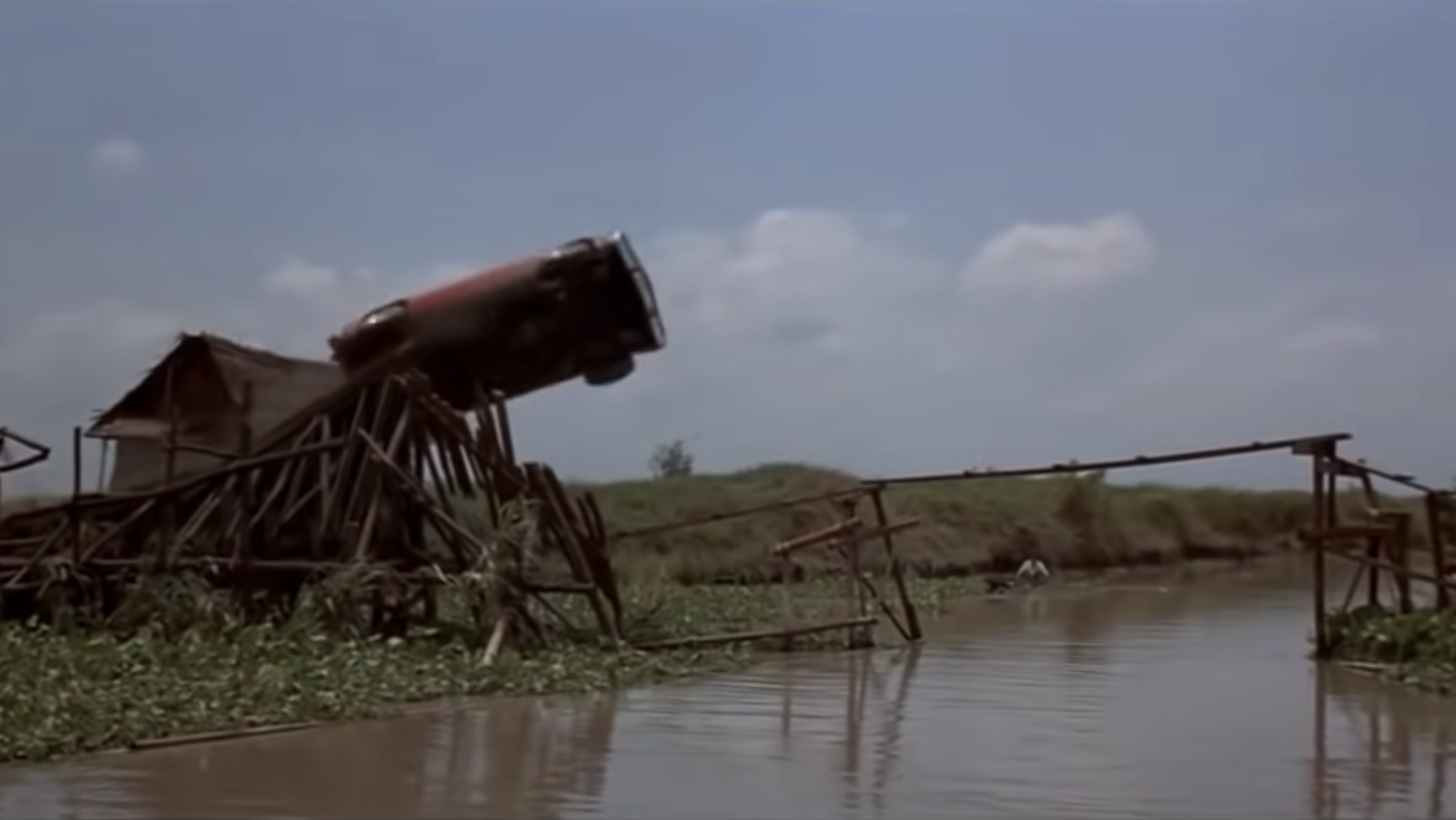
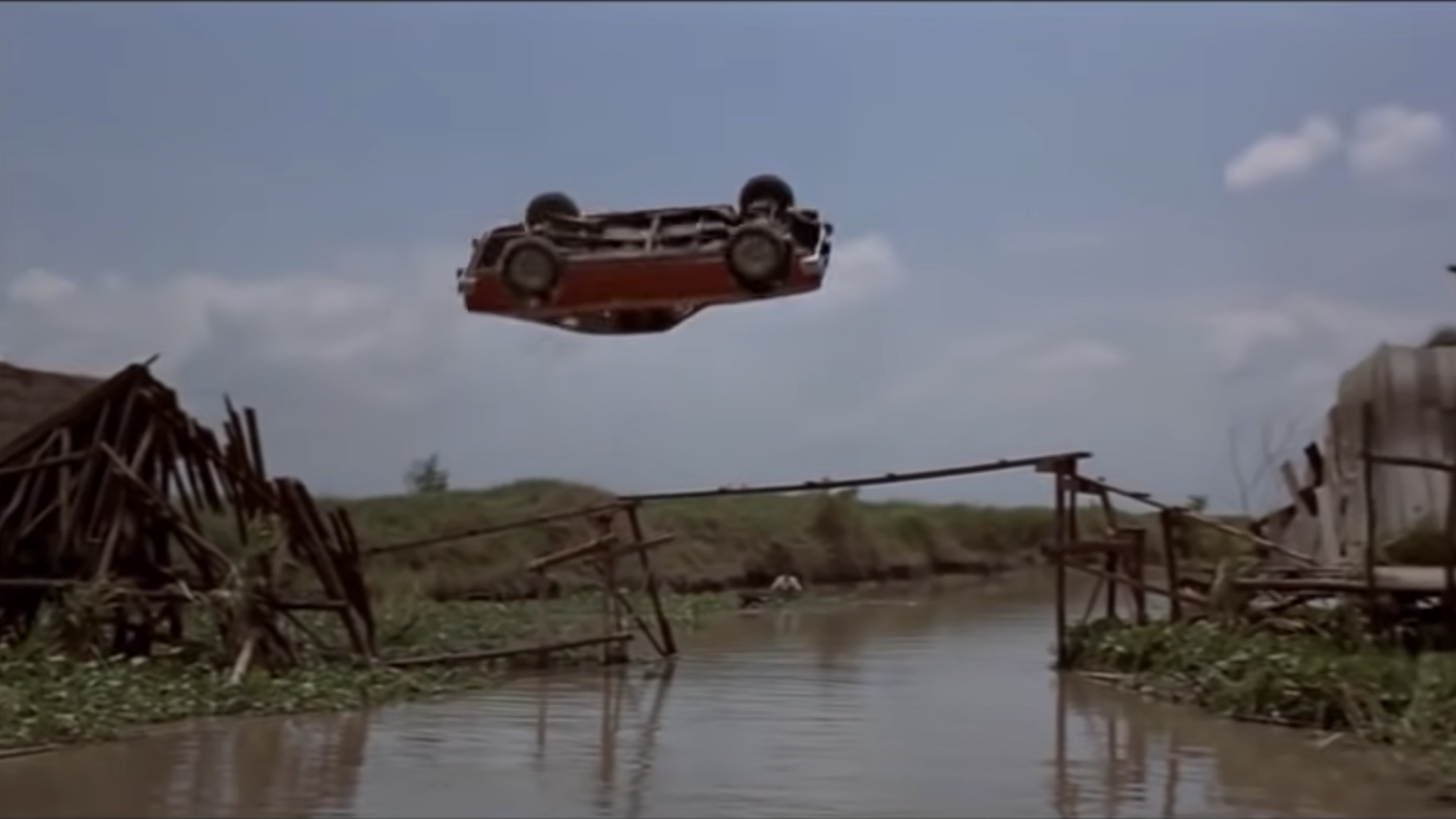
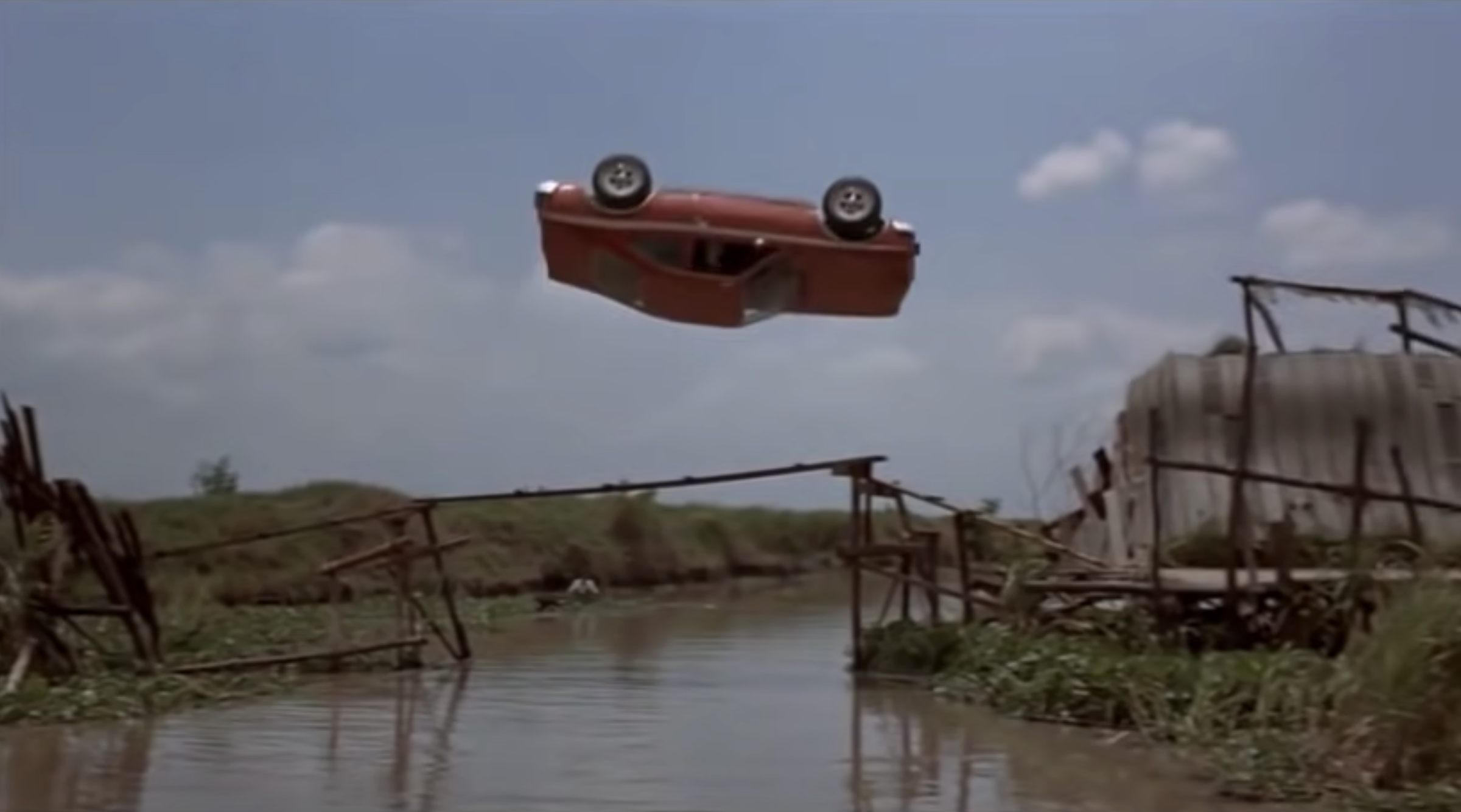
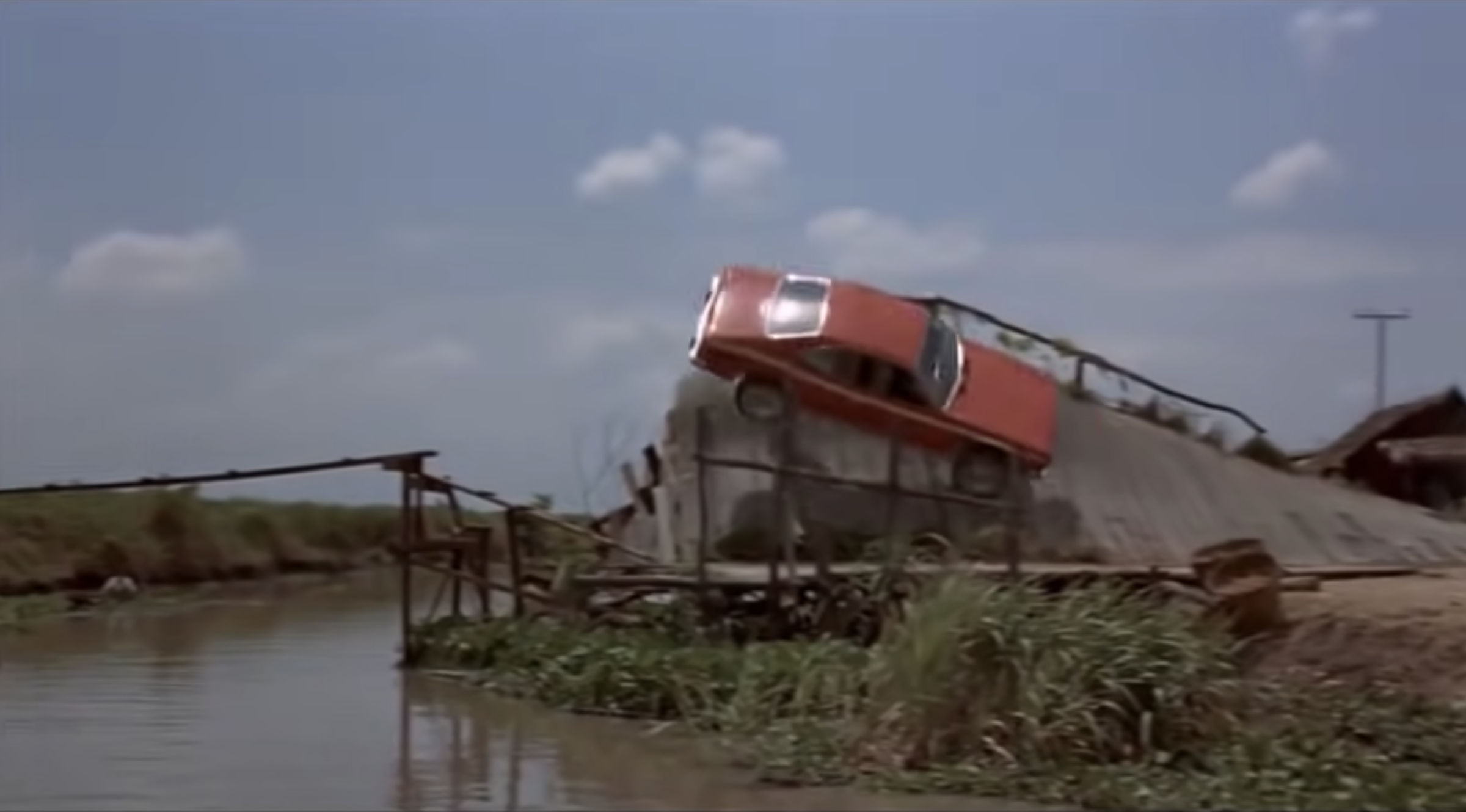
The stunt was designed by Raymond McHenry on a computer, and inspired by work he’d done for the NHSB, investigating and reconstructing single vehicle accidents. The stunts had already been seen as part of JM Productions’ The American Thrill Show right across the US, but TMWTGG director Guy Hamilton managed to licence it for the film.
What became known as the Astro Spiral jump was shot in rural Thailand on June 1st, 1974. Weight distribution was crucial for the stunt, and the Hornet was stripped of all unnecessary weight – including its fuel tank being replaced by a fuel cell, and many of the ancillaries being removed from the engine bay – and a central seat fitted further back in the cabin, complete with an extended steering column. A full ‘cage was installed, and driver ‘Bumps’ Willert’s face painted black so the cameras – six in total – couldn’t pick him out between the Bond and Pepper dummies on either side.
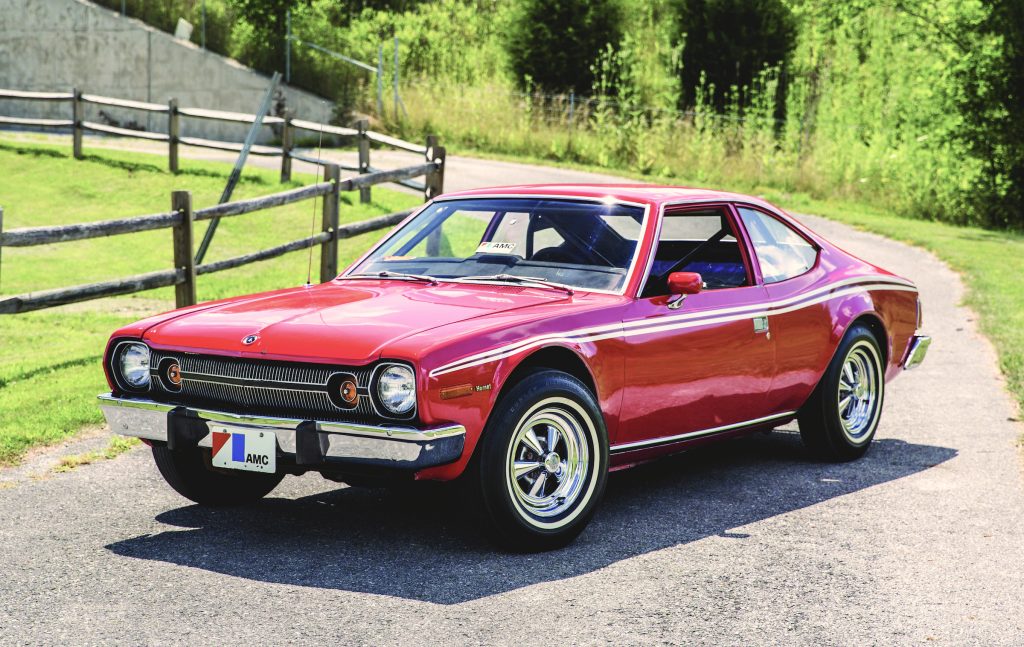
Willert had to hit the ramp, the angle of which had been mathematically calculated, at precisely 48mph to achieve the jump. And incredibly it worked first time. No further takes were needed. Stunt coordinator Milligan said later: “Thirty seconds before the stunt…we had divers underwater with a cable with a hook, because we could have had the car and driver out…quicker than just going in after the driver.”
That they weren’t needed also meant that the Hornet survived, and was eventually sold at auction in 2017 for $110,000. The stunt itself also achieved a Guinness World Record for the first astro spiral jump to appear on film. A momentous stunt, then – but make sure you mute the soundtrack as the car makes its leap.
Read more
Cars, police, and a blond wig: How The Seven Ups was shot in NYC
You could bond with Sean Connery’s Aston Martin DB5
The Midas Touch: The true value of a James Bond car








Incredible trailer! Thanks for the memories. I was 15 when the film came out; but remember it vividly. That JB franchise just keeps on rolling…
did I not read or hear from something on TV that actually the stunt driver bottled it, said I couldn’t be done so the mechanic did the stunt ? ?
My 97-year-old father worked at Calspan Corp (formerly Cornel Aeronautical Lab) in Buffalo NY, which is where the mathematical calculations and computer testing for the jump was done. There was also a ramp built behind the building to actually test the jump. He remembers seeing the jump being tested behind the building.